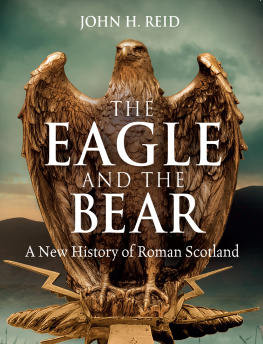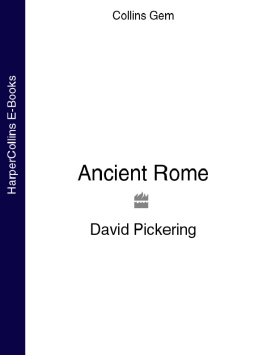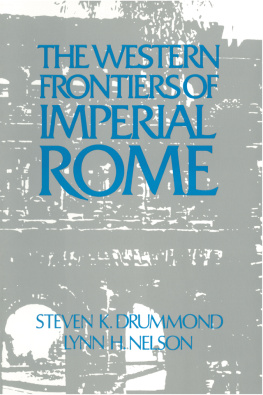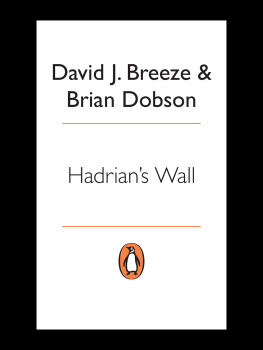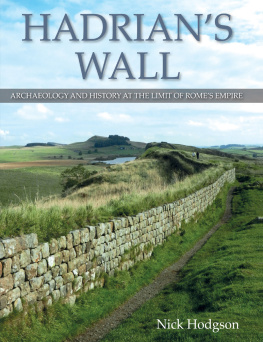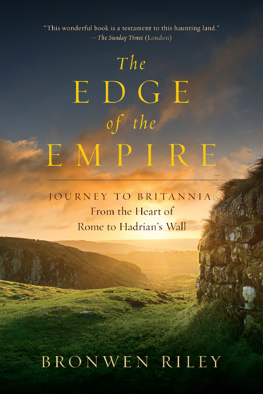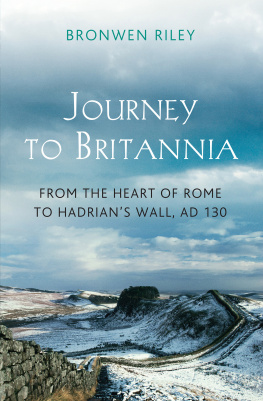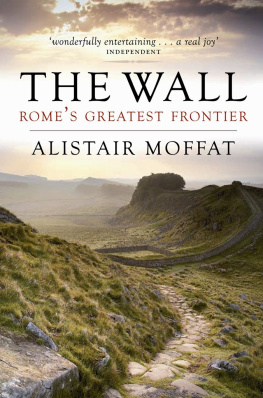Hadrians Wall and the End of Empire
Routledge Studies in Archaeology
1 An Archaeology of Materials
Substantial Transformations in Early Prehistoric Europe
Chantal Conneller
2 Roman Urban Street Networks
Streets and the Organization of Space in Four Cities
Alan Kaiser
3 Tracing Prehistoric Social Networks through Technology
A Diachronic Perspective on the Aegean
Edited by Ann Brysbaert
4 Hadrians Wall and the End of Empire
The Roman Frontier in the 4th and
5th Centuries
Rob Collins
Hadrians Wall and
the End of Empire
The Roman Frontier in the 4th and 5th
Centuries
Rob Collins
First published 2012
by Routledge
711 Third Avenue, New York, NY 10017
Simultaneously published in the UK
by Routledge
2 Park Square, Milton Park, Abingdon, Oxon OX14 4RN
Routledge is an imprint of the Taylor & Francis Group, an informa business
2012 Taylor & Francis
The right of Rob Collins to be identified as author of this work has been asserted by him in accordance with sections 77 and 78 of the Copyright, Designs and Patents Act 1988.
All rights reserved. No part of this book may be reprinted or reproduced or utilised in any form or by any electronic, mechanical, or other means, now known or hereafter invented, including photocopying and recording, or in any information storage or retrieval system, without permission in writing from the publishers.
Trademark notice: Product or corporate names may be trademarks or registered trademarks, and are used only for identification and explanation without intent to infringe.
Library of Congress Cataloging in Publication Data
Collins, Rob, 1977
Hadrians Wall and the end of empire : the Roman frontier in the 4th
and 5th centuries / by Rob Collins.
p. cm. (Routledge studies in archaeology ; 4)
Includes bibliographical references and index.
1. Great BritainHistoryRoman period, 55 B.C.449
A.D. 2. RomansGreat Britain. 3. Hadrians Wall
(England) 4. Great BritainHistory, Military55 B.C.449
A.D. 5. EnglandAntiquities, Roman. 6. Fortification, Roman
England. I. Title.
DA145.C5834 2012
936.2881dc23
2011050154
ISBN: 978-0-415-88411-2 (hbk)
ISBN: 978-0-203-11455-1 (ebk)
Printed and bound in the United States of America on sustainably sourced paper by IBT Global.
For Sarah
Figures
| Map 1 |
| Map 2 |
| 1.1 |
| 2.1 |
| 2.2 |
| 2.3 |
| 2.4 |
| 3.1 |
| 3.2 |
| 3.3 |
| 3.4 |
| 3.5 |
| 4.1 |
| 4.2 |
| 4.3 |
| 4.4 |
| 4.5 |
| 4.6 |
| 4.7 |
| 4.8 |
| 4.9 |
| 4.10 |
| 4.11 |
| 5.1 |
| 5.2 |
| 5.3 |
| 5.4 |
| 5.5 |
| 5.6 |
| 5.7 |
| 5.8 |
| 5.9 |
| 5.10 |
| 5.11 |
| 6.1 |
| 7.1 |
| 7.2 |
| 7.3 |
Tables
| 2.1 |
| 2.2 |
| 3.1 |
| 3.2 |
| 3.3 |
| 3.4 |
| 3.5 |
| 3.6 |
| 4.1 |
| 4.2 |
| 4.3 |
| 5.1 |
Abbreviations
| Amm. | Ammianus Marcellinus |
| BAR | British Archaeological Reports |
| CodTh. | Codex Theodosianus |
| EXTM | Expositio totius mundi et gentium |
| NDOc./NDOr. | Notitia Dignitatum Occidentis/Orientis |
| NovTh. | Novella Theodosiani |
| PAS | Portable Antiquities Scheme |
| RIB | Roman Inscriptions of Britain |
Acknowledgments
The publication of this book is the culmination of both doctoral and postdoctoral research that would not have been possible without the support and assistance of a number of people. Access to unpublished information and the clarification of certain points has been vital, as well as a number of stimulating discussions over the years that have helped me hone my interpretations and arguments in regard to the late frontier during the course of my PhD research and after. For all of this, and more, thanks are extended to Lindsay Allason-Jones (Newcastle University); Mick Atha; Paul Bidwell (TWAM); Andrew Birley (Vindolanda Trust); David Breeze (Historic Scotland); Peter Carne (Archaeological Services Durham University); Martin Carver (University of York); Matt Chesnais; Alex Croom (TWAM); Andrew Gardner (UCL); James Gerrard (Newcastle University); Ian Haynes (Newcastle University); Nick Hodgson (TWAM); Fraser Hunter (National Museums Scotland); Simon James (Leicester University); David Mason (Durham County Council); Alastair McCluskey (HM Armed Forces); Sam Moorhead (British Museum); Rachel Newman (Oxford Archaeology North); Tim Padley (Tullie House Museum); Dom Perring (UCL); David Petts (Durham University); Steve Roskams (University of York); Alan Rushworth (Archaeological Practice, Ltd); Margaret Snape (TWAM); Matt Symonds (Current Publishing); Sam Turner (Newcastle University); Pete Wilson (English Heritage); Tony Wilmott (English Heritage); and John Zant (Oxford Archaeology North). A further debt of gratitude is extended to Lindsay, Ian, Nick, and Tony, whose comments on an earlier draft have greatly improved the manuscript. Any mistakes that remain, of course, are my own.
The final stages of research and preparation of the manuscript were made possible through the generous support of the UK Arts & Humanities Research Council. The award of a Fellowship, with the application supported by Newcastle University, was crucial in providing me with the time to make this the book I wanted it to be. Maps were made using Ordnance Survey/EDINA cartographic data, Crown Copyright/database right 2011.
Map 1 The distribution of Roman forts in the frontier ca 350400.
Map 2 Hadrians Wall.
1 Introduction
Britain faced economic meltdown in the early fifth century, after the withdrawal of Roman armies and the end of the Roman provincial administration around 410.
(Wickham 2009: 150, italics my emphasis)
This statement concisely summarizes the perceived difference between Roman Britain and the rest of the Roman empire, subsuming a number of complex presumptions. There are a number of questions that can be drawn from the statement, but there are two aspects of particular importance in framing this study. First, there is a premise that Britain can be treated as a single unit. A plethora of data, primarily archaeological but also textual, directly contests such a premise (Mattingly 2006; Taylor 2007; White 2007; see also the work of the Portable Antiquities Scheme). Second, there is an assumption that Roman soldiers were withdrawn from the diocese, creating a direct link between military presence and the collapse of Roman society. The equation between soldiers and continued imperial rule is a recurring feature, sometimes explicit, often implicit, not only in accounts of Roman Britain, but also elsewhere in the empire. Roman soldiers become not only the guardians of empire, but the very guardians of Roman civilization. The withdrawal of the soldiers and the concession of the frontiers continue to provide a simple explanation for a narrative of the collapse of the Western empire.


